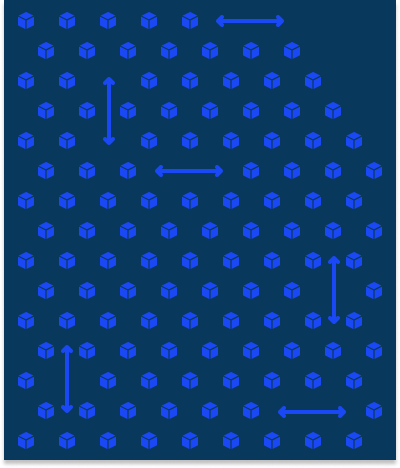About
The ASTM International Conference on Advanced Manufacturing (ASTM ICAM 2023) was held Oct. 30 – Nov. 3, 2023, at the Hyatt Regency – Capitol Hill (Washington, D.C., USA). The conference was hosted by the ASTM International Additive Manufacturing Center of Excellence (AM CoE) and supported by more than a dozen ASTM technical committees.
ICAM 2023 was ASTM’s eighth annual flagship event related to standardization, qualification, and certification with a focus on industry-specific requirements addressing the entire advanced manufacturing processes and value chains. The conference consisted of 26 symposia covering major topics and key areas in additive and advanced manufacturing. ICAM is organized by more than 100 scientific committee members, all advanced manufacturing experts from industry, academia, government and regulatory agencies, national labs, and more.
This conference addresses application specific requirements of various industry sectors in addition to covering the fundamentals of advanced manufacturing processes with the goal of transitioning research to application through standardization. Industry, academia, and government agency professionals in the AM community are invited to address the current and future state of:
- Industry standards
- Design principles
- Qualification and certification
- Innovations in the industry
- Materials and processes
- Data management, sharing, analysis, and beyond
ICAM set the stage to bring experts from around the world to exchange the latest developments in the field of advanced manufacturing with emphasis on the transition of research to application.
Co-chairs and Organizing Committee
-

Auburn University
Nima Shamsaei
Director – National Center for Additive Manufacturing Excellence (NCAME)
-

ASTM International
Mohsen Seifi
Vice President of Global Advanced Manufacturing Programs
ICAM 2023 Highlights
Program
**Click here to download the NEW ICAM 2023 FINAL Program
(released on October 23)
ICAM Program Outline
Keynote Presentations
Panel Discussions
Symposia
Awards
ICAM 2023 Awards ceremony and networking reception was held Wednesday, November 1 in Washington, D.C. where four sets of awards were presented.
Young Professional Award
This award recognizes emerging young professionals who have made significant and continuous outstanding research contributions to the field of additive manufacturing, specifically in support of standardization development.
Awards of Excellence
The Awards of Excellence were established to recognize individuals who have made continuous and outstanding contributions to the field of additive manufacturing in the areas of Research, Education, or Standardization.
Student Presentation Competition
Graduate and undergraduate students submitted abstracts and will present them in the Student Presentation Competition symposium for the 3 awards: 1st Place, 2nd Place, and 3rd Place. The student presentations will be reviewed by a select panel of judges from the ICAM 2023 Scientific Organizing Committee.
Lifetime Achievement Award
Student Presentation Competition
Over 120 graduate and undergraduate students submitted abstracts to participate in the Student Presentation Competition.
Student presentations were be judged by a select group of Scientific Organizing Committee members on the quality of presentation, technical content presented, and adherence to the instructions provided. The first, second, and third place winners were announced during the ICAM 2023 Awards Ceremony and presented with plaques and cash prizes.
The number of students approved for this competition will depend on the quality of the submitted abstracts. Please make sure to submit your abstract only to the student competition symposium for consideration.
Sponsors
Diamond Sponsors
Gold Sponsors
Supporting Government Organizations
Supporting Organizations
Media Partners
View ICAM 2023 Sponsorship Prospectus
Contact Carl Thompson at cthompson@astm.org for more information.
Short Certificate Courses
Three, short certificate courses were held on Sunday, October 29 in Washington D.C prior to ICAM 2023. These courses were instructed by members of the AM community and experts in the field covering the following topics.



























